By Tracey McGarrigan
It’s often said that home is where the heart is. By definition, home can be simply described as a place where one lives; a residence. Yet for many, the connotation of home is so much more, and usually regarded as a valued sanctuary where loved ones socially live, preferably in happy harmony.
Home can also mean the place where something is discovered or developed; a source. Both these definitions are beautifully explored, crafted and presented in Gone Home.
Arriving at the huge Greenbriar family home on a stormy night, players step into the shoes of Kaitlin, who after dumping her bags on the porch, set about hunting around for a hidden front door key; the first of many interactive discoveries in this exploratory game. A skewed apology about not being there to greet her from her younger sister Sam was stuck to the door which Kaitlin opened to find the old house dark and empty.
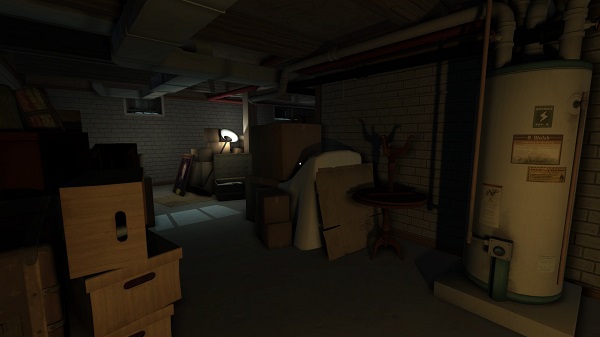
Edging into the shadowy, sparse hallway as floorboards creaked underfoot, the rain outside continued to drum heavily against the windows. In those first few cautious, exploratory moments, it was hard to swallow down the flushed sense of unease that always rises in me when entering abandoned, dark buildings in the middle of nowhere. After years of exposure to movies and games, my brain has been conditioned to expect the first of a chain of horrific, scary events to unfold.
That’s not to say that Gone Home is devoid of uneasy revelations. Rather than experiencing the jumpy, terrifying kind; here a sometimes-difficult-to-accept truth is uncovered at the player’s own pace through a series of letters, journals, post-stick notes, cassette tapes and pamphlets left around the house. Despite the unnerving location, there was no violent combat and no tricky puzzles, just an empty house waiting to be explored. Once I felt comfortable that this wasn't a horror story or a creepy game where nasty, devouring surprises lay waiting to spring out and attack at every corner, I found myself totally engrossed and curious to learn all I could about this family who were mysteriously absent from the house that night.
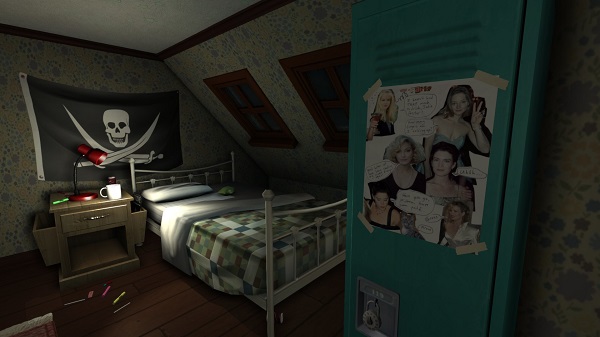
Set in the mid-nineties, whilst Kaitlin was travelling around Europe for a year, Sam and her parents had inherited and moved into a creaky old house. In the hallway I reached for the nearest light but found little hope or warmth in the elliptical light it pooled onto the wall, as a scratty electrical inspection report stuffed in a draw revealed some dodgy wiring was holding the house together. Unpacked boxes were piled up in closets and unused rooms, and each room held clues about the events and secrets that most families would rather keep buried and private. It was only by playing as Kaitlin that the guilty feeling of intruding and trespassing subsided, and allowed me to carry on exploring without fear of being caught.
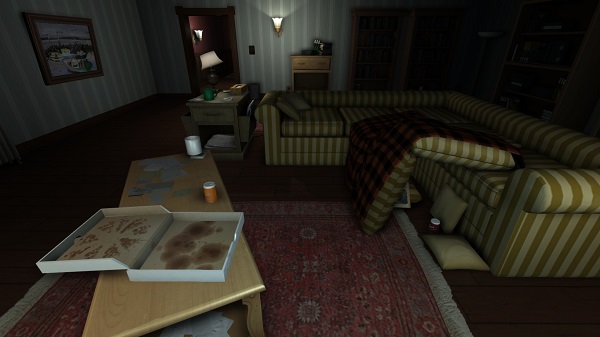
The rooms and corridors appeared normal, with doors to open, taps to turn on, and plenty of drawers, cupboards, book shelves and boxes to rummage through - it's a snooper's paradise. Most of the objects left on side tables and in cabinets could be picked up and examined. Not all added to the main thread of the story. Some initially appeared to be randomly discarded receipts or pamphlets until their significance became clear later, yet all added to the overall profile of a family learning to adapt to changes; leaving a trail behind them of what it means and takes to live and love every day. I saw it as an homage to the strength and survival that every person must try and find when things get tough, that managed to be beautiful and touching without being schmaltzy or preaching.
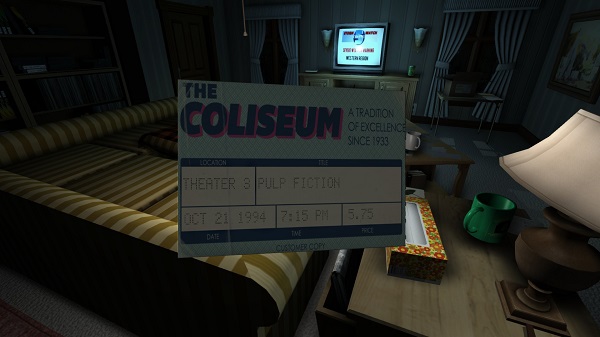
Most of the correspondence was from Sam who was struggling to fit in at her new school. Labelled “The Psycho House Girl”, without her older sister around, Sam has had to find her own ways of adapting to her new life. A big street fighter fan, she had drifted apart from her old male school friend, who she kept in touch with just to borrow his games. Sam also appeared to further buck the USA school kid stereotype as she began to explore smoking, going to watch violent films, hanging out at the arcade and promoting an angsty all-female singing teen trash band. Finding and fighting a cause when a teenager can be equally liberating and daunting, especially when it can potentially lead to being outcast by peers. Sam's bitter-sweet story of self-discovery is simultaneously a positive one thanks to her discovery of love, and a melancholy one as the only way she was able to emotionally share her thoughts and feelings was via creative writing; with pencils, biros, journals, magazines and cassette tapes found throughout the house. In fact the whole family communicate through writing.
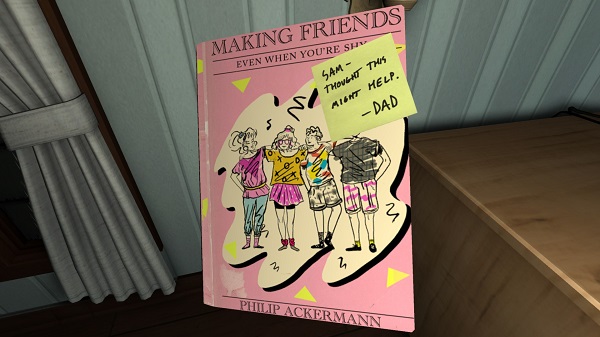
Their father was a best selling JFK conspiracy author in the 1970s and after some hard rejections from publishers, was enjoying a resurgence of in interest in his work, thanks in no small part to the popularity of TV shows of the time like The X-Files, of which there were dozens of episodes recorded on VHS and carefully labelled in order in the main living area. His wife works as a conservationist for a forestry commission which appeared to be a high managerial position that kept her away from home, where she had caught the eye of a male work colleague she intimated in letters to a friend...
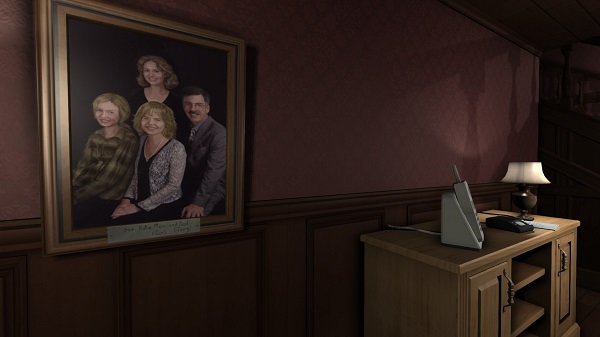
Though the controls and premise were simple, the relationships woven into pencil and ink were complex, sincere, authentic, and left an emotional imprint that have stayed long after the game was over. The digging for information was never mundane as my connection to this family grew, their lives fitting together piece by resonating piece. A moving experience packed with sci-fi nostalgia where the definition of 'home' becomes so much more than just people and walls.